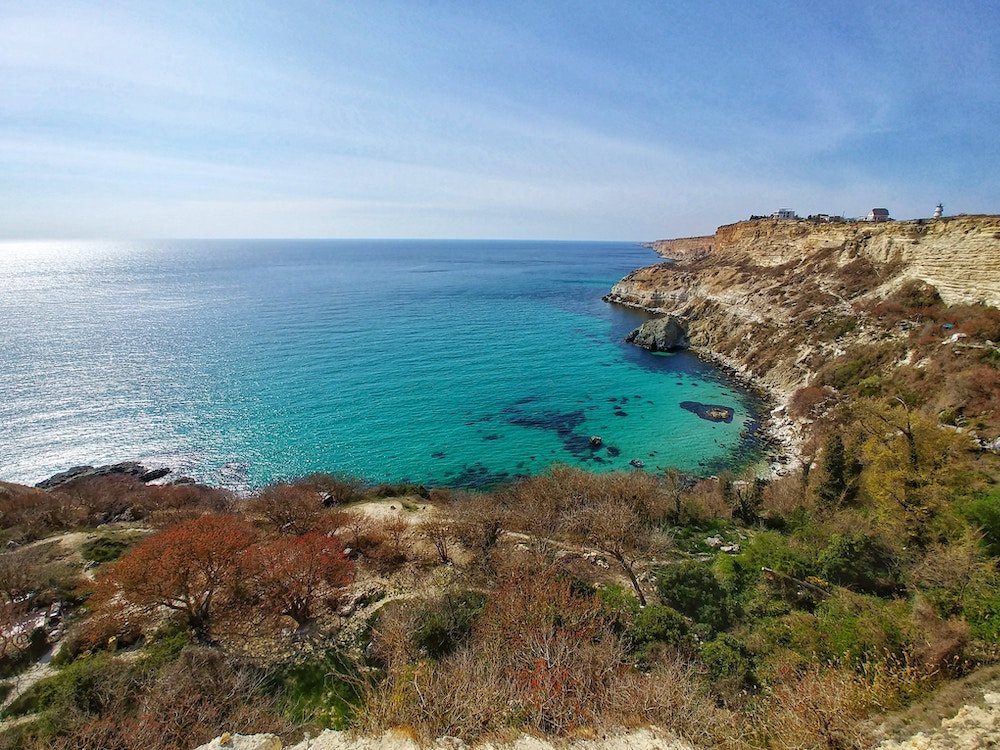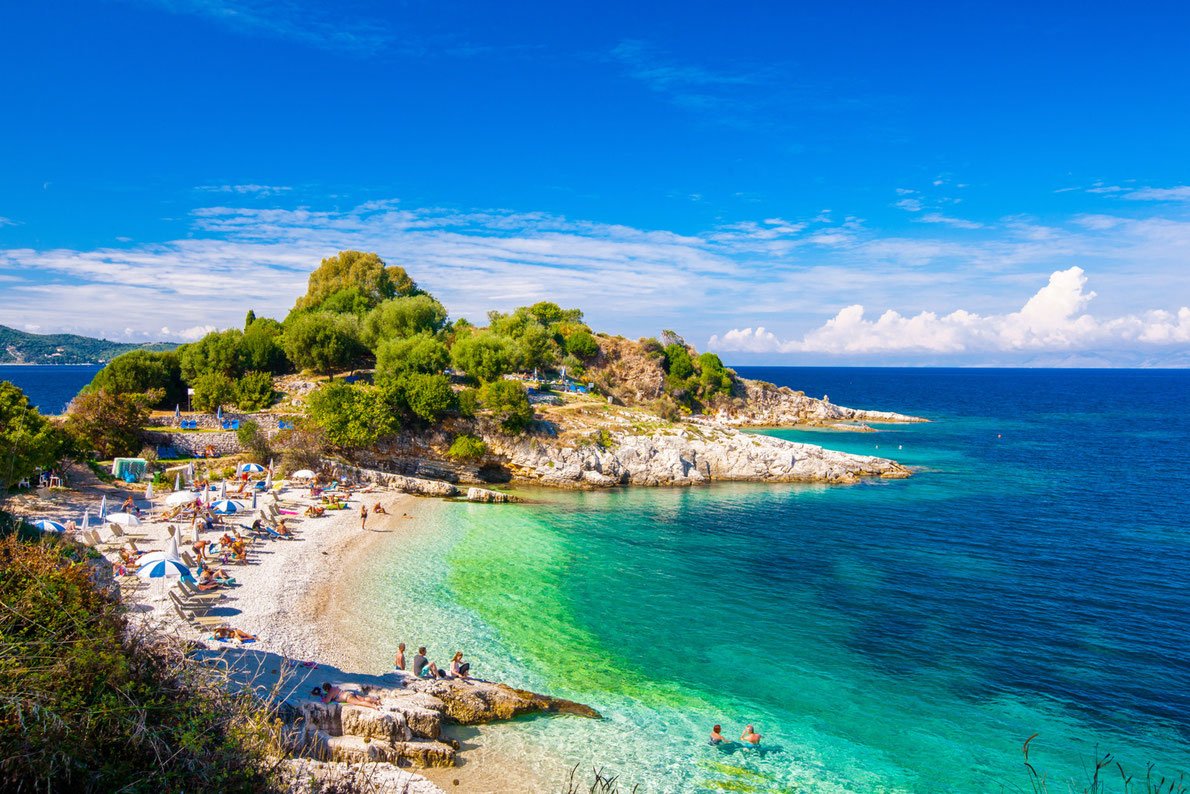
Want to know what the best European islands are to visit?
Europe boasts a myriad of breathtaking islands that beckon travelers from across the globe.
From the azure waters of the Mediterranean to the rugged coastlines of the Atlantic, European islands offer a diverse range of landscapes, cultures, and experiences.
These enchanting destinations are renowned for their natural beauty, rich history, and vibrant communities.
For travel enthusiasts, European islands represent an unparalleled opportunity to immerse oneself in stunning landscapes, indulge in delectable cuisine, and discover hidden gems off the beaten path.
Each island has its own distinct charm, offering a unique blend of adventure, relaxation, and cultural exploration.
Whether you’re seeking sun-soaked beaches, ancient ruins, or vibrant nightlife, Europe’s islands have something to offer every type of traveler.
In this article, we will embark on a journey to explore the 12 best European islands that should be at the top of every traveler’s bucket list.
Join us as we delve into the allure of each destination, uncovering hidden treasures and insider tips along the way.
Get ready to be inspired and start planning your next island adventure!
Now, let’s take a closer look at the 12 best European islands:
1. Sardinia, Italy
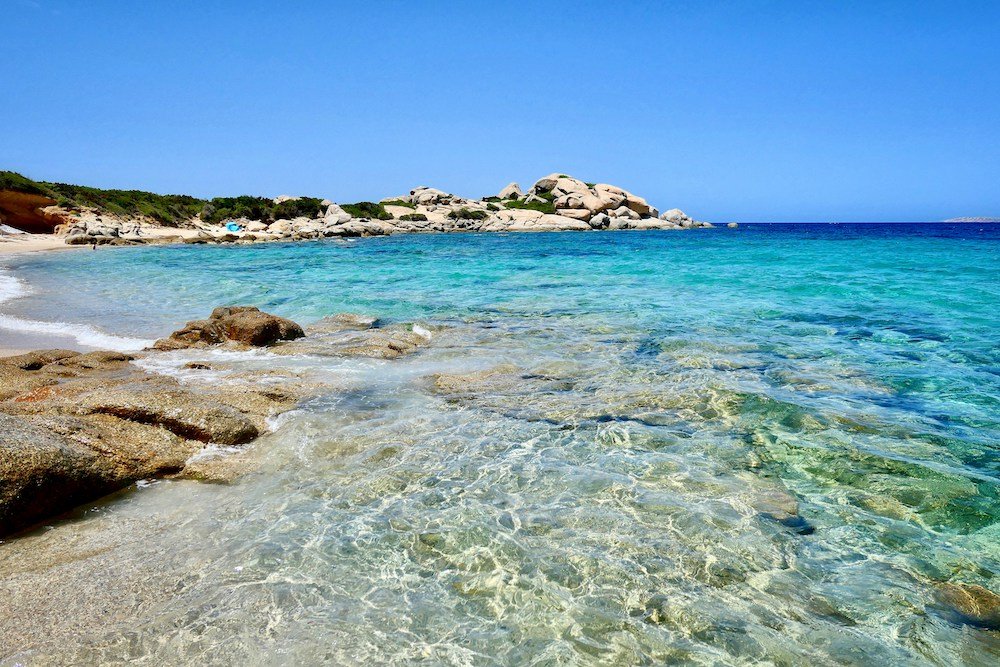
Sardinia, the second-largest island in the Mediterranean Sea, is a jewel in Italy’s crown.
Renowned for its stunning beaches, rugged landscapes, and rich cultural heritage, Sardinia captivates visitors with its timeless beauty and laid-back charm.
Nestled off the coast of mainland Italy, this enchanting island boasts a diverse tapestry of landscapes, from sandy shores to craggy mountains, making it a paradise for outdoor enthusiasts and sunseekers alike.
Breathtaking beaches line Sardinia’s coast, from the iconic Costa Smeralda to the secluded coves of Cala Luna.
Each beach offers a tranquil escape surrounded by natural beauty.
Moreover, the island’s ancient ruins and archaeological sites, including the mysterious nuraghe towers, offer insight into its fascinating history.
The best time to visit Sardinia is during the late spring and early autumn months, from April to June and September to October, when the weather is mild, and the crowds are smaller.
Renting a car is recommended for exploring the island’s diverse landscapes and hidden treasures.
Additionally, indulging in Sardinia’s delectable cuisine, which features fresh seafood, flavorful pastas, and aromatic wines, is a must for visitors.
With its stunning landscapes, rich history, and warm hospitality, Sardinia beckons travelers to uncover its many treasures and create unforgettable memories amidst its timeless beauty.
2. Mykonos, Greece
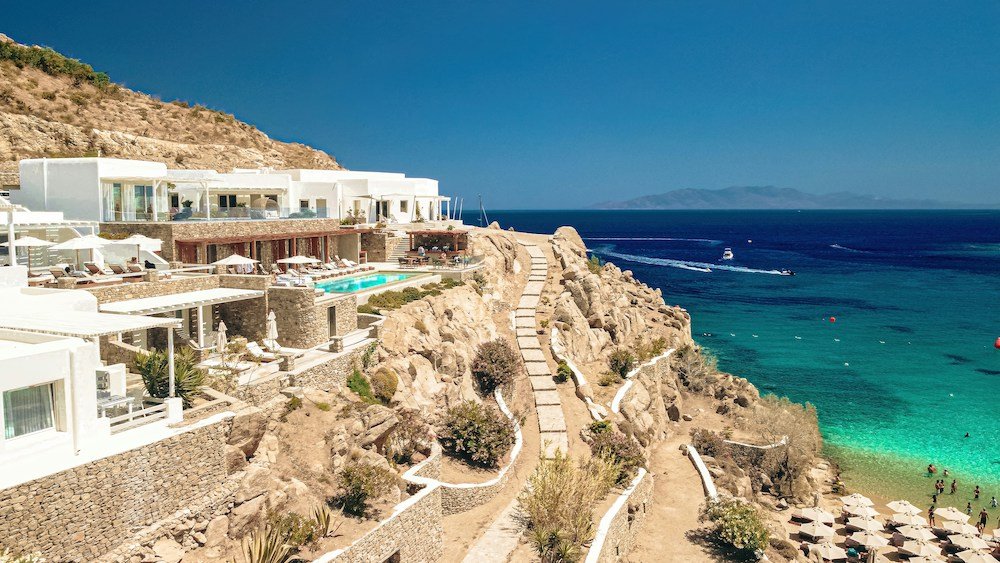
Mykonos, a cosmopolitan island in the heart of the Cyclades, is renowned for its vibrant nightlife, picturesque landscapes, and charming whitewashed villages.
Situated in the Aegean Sea, Mykonos beckons travelers with its dazzling beaches, azure waters, and lively atmosphere.
The island’s enchanting blend of traditional charm and modern luxury makes it a sought-after destination for discerning travelers seeking both relaxation and excitement.
Mykonos boasts a myriad of unique features and attractions that enchant visitors from around the world.
Its iconic windmills overlooking the picturesque Little Venice, narrow cobblestone streets lined with boutiques and cafes, and ancient archaeological sites such as Delos, the mythical birthplace of Apollo and Artemis, showcase the island’s rich history and cultural heritage.
The best time to visit Mykonos is during the late spring and early autumn months, from May to June and September to October, when the weather is warm, and the crowds are smaller.
During these months, visitors can enjoy pleasant temperatures and explore the island’s attractions without the peak summer crowds.
For travelers planning a visit to Mykonos, it is recommended to explore the island’s charming villages, such as Mykonos Town and Ano Mera, where one can discover hidden gems and experience authentic Greek hospitality.
Moreover, indulging in the island’s renowned culinary scene, which features fresh seafood, traditional Greek dishes, and international cuisine, is a must for food enthusiasts.
Whether strolling along its scenic waterfront, soaking up the sun on its pristine beaches, or dancing the night away in its world-famous clubs, Mykonos offers a captivating blend of beauty, culture, and excitement that leaves a lasting impression on every visitor.
3. Ibiza, Spain
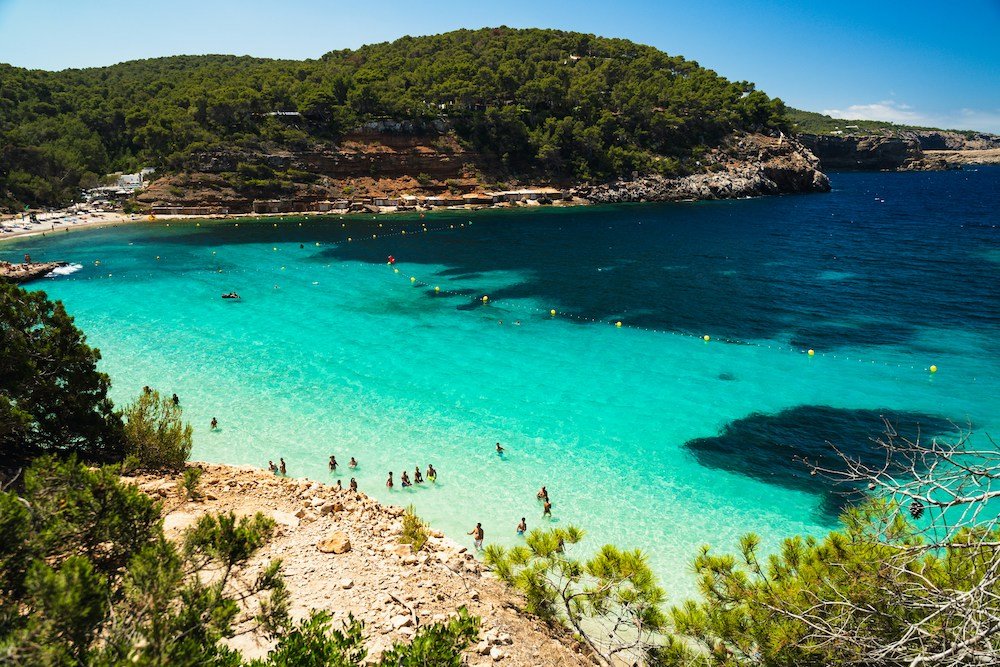
Ibiza, a legendary island nestled in the Balearic archipelago, is renowned for its electrifying nightlife, stunning beaches, and vibrant cultural scene.
Situated in the Mediterranean Sea off the eastern coast of Spain, Ibiza captivates visitors with its bohemian atmosphere, scenic landscapes, and world-class entertainment.
Introducing itself as a haven for partygoers, Ibiza offers an array of unique features and attractions beyond its famed nightlife.
Its picturesque old town, Dalt Vila, a UNESCO World Heritage Site, boasts ancient fortifications, cobblestone streets, and charming cafes that offer a glimpse into the island’s rich history and culture.
Moreover, Ibiza’s pristine beaches, such as Playa d’en Bossa and Cala Comte, beckon sunseekers with their crystal-clear waters and golden sands.
The best time to visit Ibiza is during the summer months, from June to September, when the island comes alive with a myriad of events, parties, and cultural festivals.
Visitors can bask in the Mediterranean sun, explore the island’s natural beauty, and immerse themselves in its vibrant nightlife during this time.
For travelers planning a visit to Ibiza, it is advisable to explore beyond the bustling clubs and beaches to discover the island’s hidden gems.
From exploring local markets and sampling authentic Spanish cuisine to embarking on boat trips to secluded coves and visiting historic sites, Ibiza offers a wealth of experiences for every type of traveler.
Whether seeking relaxation, adventure, or excitement, Ibiza captivates visitors with its unparalleled beauty, vibrant culture, and irresistible charm, making it a must-visit destination for travelers from around the world.
4. Crete, Greece
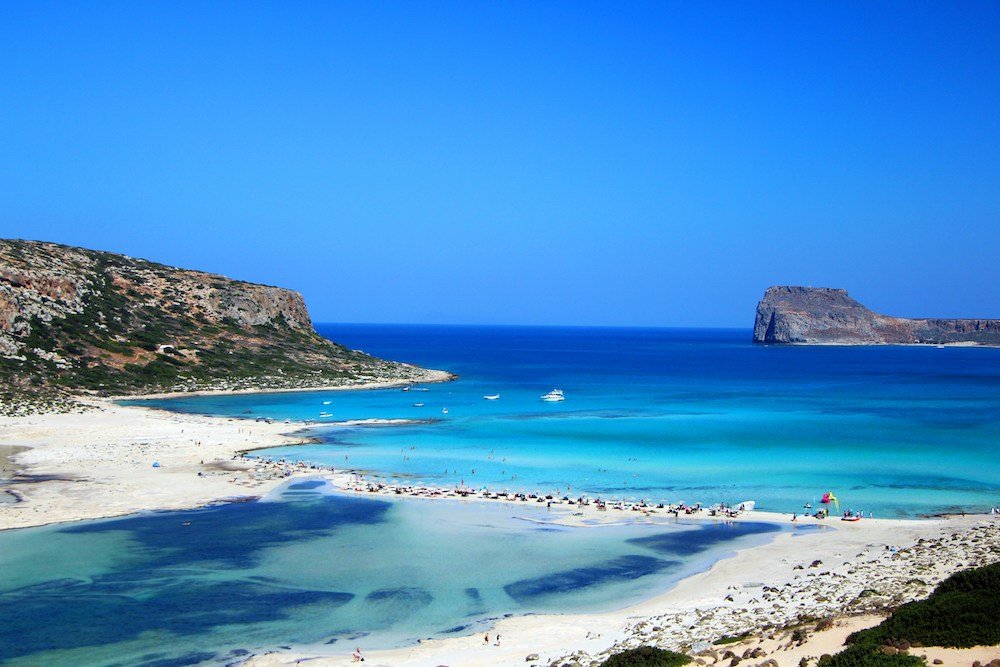
Crete, the largest and most populous of the Greek islands, is a tapestry of ancient history, breathtaking landscapes, and vibrant culture.
Situated in the southern Aegean Sea, Crete boasts a rich tapestry of natural wonders, from rugged mountains and verdant valleys to pristine beaches and turquoise waters.
Renowned as the birthplace of the Minoan civilization, Crete captivates visitors with its fascinating archaeological sites, charming villages, and warm hospitality.
The island of Crete offers a wealth of unique features and attractions for travelers to explore.
Its historic capital, Heraklion, is home to the iconic Palace of Knossos, a sprawling archaeological site that offers insight into the ancient Minoan civilization.
Moreover, Crete’s charming villages, such as Chania and Rethymno, boast Venetian-era architecture, labyrinthine alleyways, and bustling markets that beckon visitors to wander and explore.
The best time to visit Crete is during the late spring and early autumn months, from May to June and September to October, when the weather is mild, and the crowds are smaller.
During these months, visitors can enjoy pleasant temperatures, blooming wildflowers, and fewer tourists, allowing for a more relaxed and authentic experience.
For travelers planning a visit to Crete, it is recommended to explore the island’s diverse landscapes, from the rugged gorges of Samaria to the idyllic beaches of Elafonissi and Balos.
Moreover, sampling Crete’s renowned cuisine, which features fresh seafood, locally sourced produce, and traditional dishes such as dakos and moussaka, is a must for food enthusiasts.
Whether exploring its ancient ruins, hiking its scenic trails, or simply soaking up the sun on its stunning beaches, Crete offers a captivating blend of history, culture, and natural beauty that leaves a lasting impression on every visitor.
5. Sicily, Italy

Sicily, the largest island in the Mediterranean Sea, is a treasure trove of history, culture, and natural beauty.
Situated at the crossroads of Europe and Africa, Sicily boasts a rich tapestry of influences, from ancient Greek temples and Roman ruins to Arabesque architecture and Norman cathedrals.
With its stunning landscapes, vibrant cities, and delectable cuisine, Sicily offers a captivating blend of old-world charm and modern allure.
Introducing itself as a melting pot of civilizations, Sicily enchants visitors with its unique features and attractions.
Its historic capital, Palermo, boasts a wealth of architectural treasures, including the stunning Palermo Cathedral and the majestic Palazzo dei Normanni.
Moreover, Sicily’s ancient ruins, such as the Valley of the Temples in Agrigento and the Greek Theatre in Taormina, offer a glimpse into the island’s rich history and cultural heritage.
The best time to visit Sicily is during the spring and autumn months, from April to June and September to October, when the weather is mild, and the crowds are smaller.
During these months, visitors can enjoy pleasant temperatures, blooming landscapes, and cultural events without the peak summer crowds.
For travelers planning a visit to Sicily, it is advisable to explore the island’s diverse landscapes and attractions.
From hiking the slopes of Mount Etna, Europe’s tallest active volcano, to indulging in Sicilian cuisine, which features fresh seafood, savory pastries, and delectable desserts, Sicily offers a wealth of experiences for every type of traveler.
Whether exploring its ancient ruins, wandering through its charming villages, or savoring its culinary delights, Sicily captivates visitors with its timeless beauty, rich history, and warm hospitality, making it a must-visit destination for travelers seeking an unforgettable experience in the heart of the Mediterranean.
6. Azores, Portugal
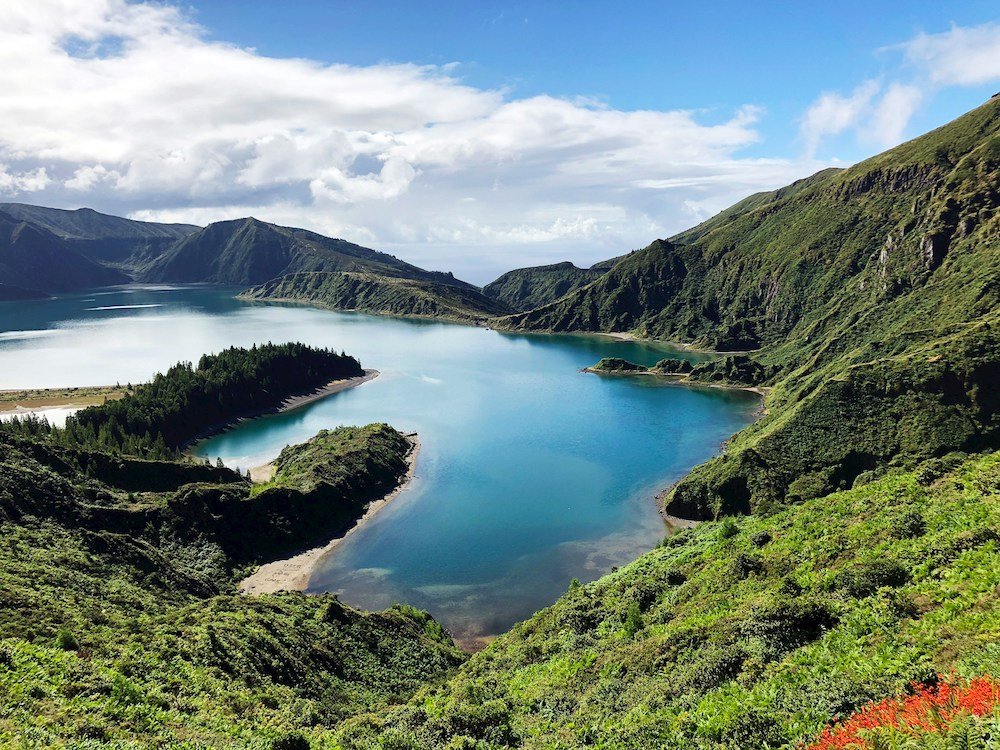
The Azores, an enchanting archipelago situated in the mid-Atlantic Ocean, is a hidden gem waiting to be discovered.
Comprising nine volcanic islands, the Azores boast a pristine natural landscape, rugged coastlines, and breathtaking vistas that showcase the raw beauty of nature.
Nestled between Europe and North America, the Azores offer a tranquil retreat far from the hustle and bustle of modern life.
Introducing itself as a paradise for nature lovers, the Azores offer a myriad of unique features and attractions.
From majestic volcanic craters and azure crater lakes to cascading waterfalls and thermal hot springs, each island in the archipelago boasts its own distinct charm and natural wonders.
Moreover, the Azores are a haven for outdoor enthusiasts, offering a wealth of activities such as hiking, whale watching, and diving amidst its pristine marine environment.
The best time to visit the Azores is during the spring and summer months, from May to September, when the weather is mild, and the landscapes are in full bloom.
During these months, visitors can enjoy pleasant temperatures, clear skies, and a vibrant array of flora and fauna.
Additionally, the shoulder seasons of autumn and winter offer unique opportunities for storm watching and exploring the island’s lush green landscapes.
For travelers planning a visit to the Azores, it is recommended to explore the diverse landscapes and attractions of each island.
From exploring the volcanic landscapes of Pico and Sao Miguel to discovering the charming villages and historic sites of Terceira and Faial, the Azores offer a wealth of experiences for every type of traveler.
Whether seeking adventure, relaxation, or cultural immersion, the Azores offer a captivating blend of natural beauty, rich history, and warm hospitality that leaves a lasting impression on every visitor.
With its untouched landscapes and tranquil atmosphere, the Azores beckon travelers to embark on a journey of discovery amidst the wonders of the Atlantic.
7. Santorini, Greece
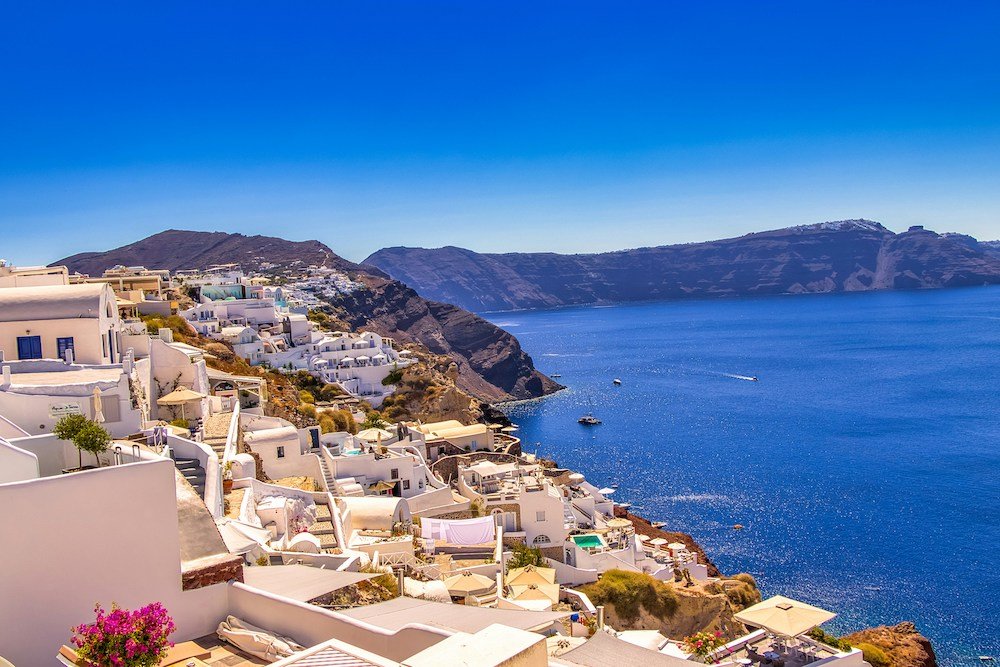
Santorini, a picturesque island in the Cyclades archipelago, is a postcard-perfect destination famed for its stunning sunsets, whitewashed buildings, and dramatic cliffs overlooking the Aegean Sea.
Renowned as one of the most romantic destinations in the world, Santorini captivates visitors with its breathtaking vistas, charming villages, and vibrant cultural scene.
Introducing itself as a jewel of the Aegean, Santorini offers a wealth of unique features and attractions.
Its iconic caldera, formed by a volcanic eruption thousands of years ago, is a sight to behold, with its towering cliffs, crystalline waters, and picturesque villages perched atop the cliffs.
Moreover, Santorini’s villages, such as Oia, Fira, and Imerovigli, boast traditional Cycladic architecture, narrow cobblestone streets, and stunning vistas that offer the perfect backdrop for romantic strolls and unforgettable moments.
The best time to visit Santorini is during the late spring and early autumn months, from April to June and September to October, when the weather is warm, and the crowds are smaller.
During these months, visitors can enjoy pleasant temperatures, blooming flowers, and stunning sunsets without the peak summer crowds.
For travelers planning a visit to Santorini, it is recommended to explore the island’s diverse landscapes and attractions.
From exploring its volcanic beaches, such as Red Beach and Kamari Beach, to sampling its renowned cuisine, which features fresh seafood, local specialties, and delicious wines, Santorini offers a wealth of experiences for every type of traveler.
Whether watching the sunset from Oia’s iconic cliffs, sailing around the caldera, or exploring its charming villages, Santorini captivates visitors with its timeless beauty, warm hospitality, and romantic atmosphere, making it a must-visit destination for travelers seeking an unforgettable experience in the heart of the Aegean.
8. Menorca, Spain

Menorca, the tranquil jewel of the Balearic Islands, is renowned for its pristine beaches, turquoise waters, and unspoiled natural beauty.
Situated in the western Mediterranean Sea, Menorca offers a peaceful retreat away from the crowds, where visitors can immerse themselves in the island’s laid-back atmosphere and stunning landscapes.
Introducing itself as a paradise for nature lovers, Menorca boasts a wealth of unique features and attractions.
Its idyllic beaches, such as Cala Macarella, Cala Turqueta, and Son Bou, are renowned for their soft sands and crystal-clear waters, making them perfect for swimming, snorkeling, and sunbathing.
Moreover, Menorca’s diverse landscapes, including lush forests, rugged cliffs, and charming countryside, offer endless opportunities for outdoor adventure and exploration.
The best time to visit Menorca is during the late spring and early autumn months, from May to June and September to October, when the weather is warm, and the crowds are smaller.
During these months, visitors can enjoy pleasant temperatures, blooming wildflowers, and tranquil beaches without the peak summer crowds.
For travelers planning a visit to Menorca, it is recommended to explore the island’s charming villages and historic sites.
From the picturesque port town of Mahón to the ancient Talayotic settlements scattered across the island, Menorca offers a fascinating glimpse into its rich history and cultural heritage.
Moreover, indulging in Menorca’s renowned cuisine, which features fresh seafood, locally sourced produce, and traditional dishes such as caldereta de langosta (lobster stew), is a must for food enthusiasts.
Whether lounging on its pristine beaches, exploring its scenic countryside, or discovering its hidden treasures, Menorca captivates visitors with its timeless beauty, warm hospitality, and unspoiled charm, making it a must-visit destination for travelers seeking a peaceful escape in the heart of the Mediterranean.
9. Hvar, Croatia
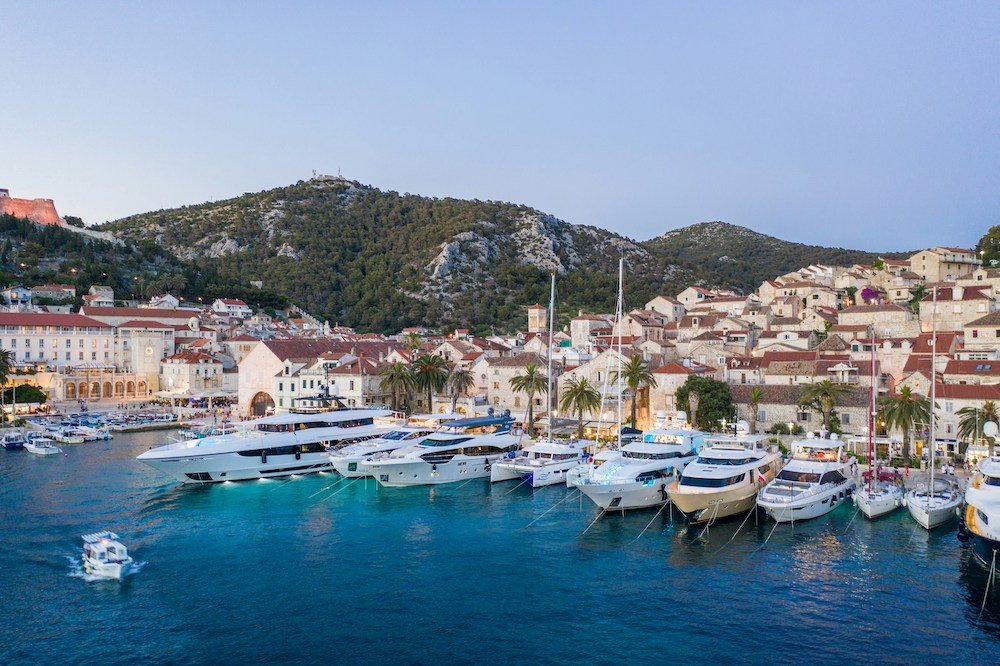
Hvar, a captivating island nestled in the Adriatic Sea, is renowned for its stunning landscapes, historic towns, and vibrant culture.
Situated off the Dalmatian coast, Hvar beckons travelers with its azure waters, sun-drenched beaches, and charming villages steeped in history and tradition.
Introducing itself as a haven for sunseekers and history enthusiasts alike, Hvar offers a wealth of unique features and attractions.
Its historic main town, also named Hvar, boasts an impressive medieval fortress overlooking the picturesque harbor, as well as elegant Renaissance palaces and bustling squares lined with cafes and restaurants.
Moreover, Hvar’s pristine beaches, such as Dubovica and Stiniva, offer idyllic settings for swimming, snorkeling, and relaxation amidst stunning natural beauty.
The best time to visit Hvar is during the late spring and summer months, from May to September, when the weather is warm, and the island comes alive with cultural events, festivals, and outdoor activities.
During these months, visitors can enjoy long sunny days, lively nightlife, and a vibrant atmosphere that epitomizes the Mediterranean lifestyle.
For travelers planning a visit to Hvar, it is recommended to explore the island’s charming villages and scenic landscapes.
From exploring the lavender fields and olive groves of the interior to discovering hidden coves and remote islands on a boat tour, Hvar offers a wealth of experiences for every type of traveler.
Moreover, indulging in Hvar’s renowned cuisine, which features fresh seafood, locally grown produce, and traditional Dalmatian dishes, is a must for food enthusiasts.
Whether exploring its historic sites, basking in the sun on its pristine beaches, or savoring its culinary delights, Hvar captivates visitors with its timeless beauty, warm hospitality, and Mediterranean charm, making it a must-visit destination for travelers seeking an unforgettable experience in Croatia’s Adriatic paradise.
10. Canary Islands, Spain
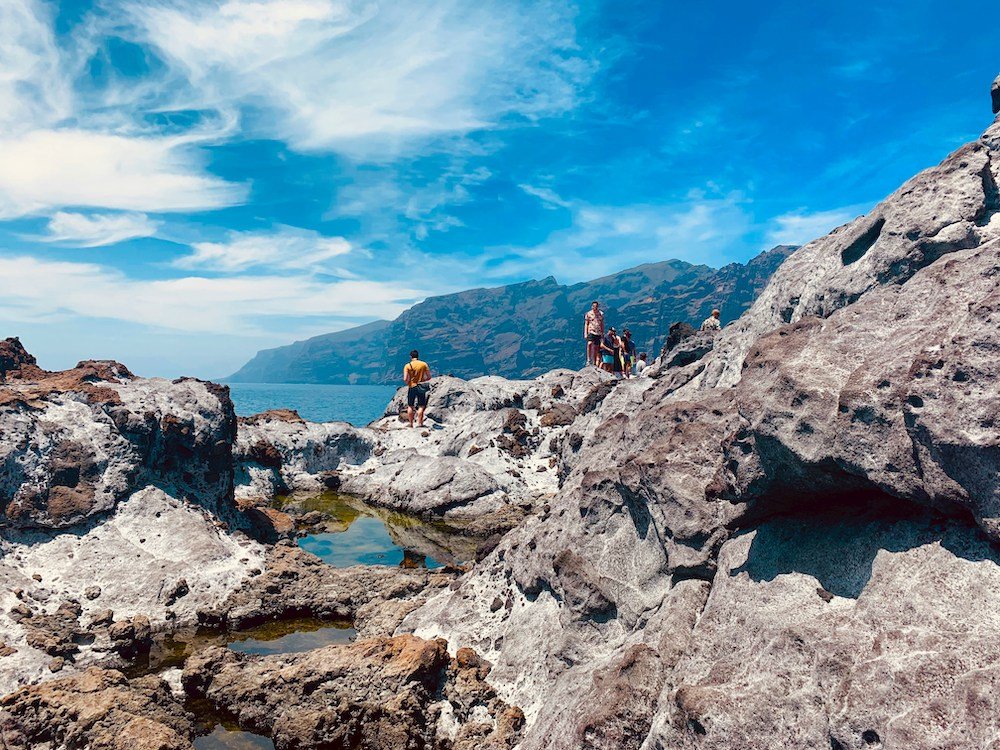
The Canary Islands, an archipelago off the northwest coast of Africa, is a diverse and enchanting destination known for its volcanic landscapes, beautiful beaches, and year-round sunshine.
Comprising seven main islands, each with its own distinct character and attractions, the Canary Islands offer a wealth of experiences for travelers seeking adventure, relaxation, and natural beauty.
Introducing themselves as a paradise for outdoor enthusiasts and sunseekers, the Canary Islands boast a myriad of unique features and attractions.
From the towering volcanic peaks of Mount Teide in Tenerife to the lunar-like landscapes of Lanzarote’s Timanfaya National Park, each island offers stunning natural beauty and opportunities for exploration.
Moreover, the Canary Islands’ pristine beaches, such as Playa del Ingles in Gran Canaria and Playa de las Teresitas in Tenerife, offer idyllic settings for swimming, sunbathing, and water sports.
The best time to visit the Canary Islands depends on the activities and experiences you seek.
For beach lovers and sunseekers, the summer months from June to September offer warm temperatures and plenty of sunshine.
However, for hiking, sightseeing, and outdoor activities, the spring and autumn months from March to May and October to November are ideal, with mild temperatures and fewer crowds.
For travelers planning a visit to the Canary Islands, it is recommended to explore the unique attractions and landscapes of each island.
Whether hiking through lush forests, exploring volcanic caves, or sampling local cuisine in charming villages, the Canary Islands offer a wealth of experiences to suit every taste and interest.
Moreover, travelers should take advantage of the islands’ excellent infrastructure, including public transportation and guided tours, to make the most of their visit.
Whether seeking relaxation on sun-kissed beaches, exploring volcanic landscapes, or immersing oneself in vibrant island culture, the Canary Islands offer a diverse and unforgettable travel experience that promises something for everyone.
With their warm climate, stunning scenery, and welcoming atmosphere, the Canary Islands beckon travelers to discover the beauty and magic of this enchanting archipelago.
11. Sifnos, Greece
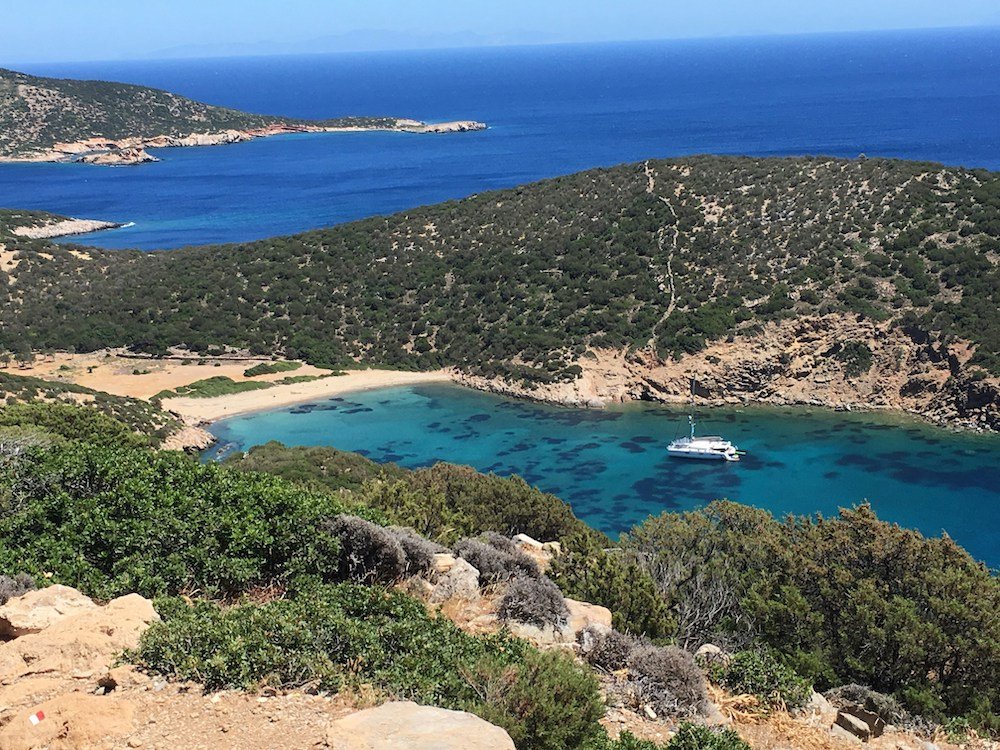
Sifnos, a hidden gem in the Cyclades archipelago, is a pristine island known for its charming villages, sandy beaches, and traditional Greek hospitality.
Situated in the heart of the Aegean Sea, Sifnos offers a serene escape from the crowds, where visitors can immerse themselves in the island’s timeless beauty and laid-back atmosphere.
Introducing itself as a haven for culture and gastronomy, Sifnos boasts a wealth of unique features and attractions.
Its whitewashed villages, such as Apollonia and Kastro, exude a traditional charm, with narrow cobblestone streets, ancient churches, and panoramic views of the Aegean Sea.
Moreover, Sifnos is renowned for its rich culinary heritage, with a variety of tavernas and restaurants serving authentic Greek cuisine, including local specialties such as mastelo (slow-cooked lamb) and revithada (chickpea stew).
The best time to visit Sifnos is during the late spring and early autumn months, from May to June and September to October, when the weather is mild, and the island is less crowded.
During these months, visitors can enjoy pleasant temperatures, blooming wildflowers, and a relaxed atmosphere ideal for exploration and relaxation.
For travelers planning a visit to Sifnos, it is recommended to explore the island’s charming villages, picturesque beaches, and historic sites.
From hiking along scenic trails to swimming in crystal-clear waters, Sifnos offers a variety of outdoor activities for nature lovers and adventure seekers alike.
Moreover, visitors should take the time to explore the island’s cultural attractions, including its ancient churches, monasteries, and archaeological sites, which offer insight into Sifnos’ rich history and heritage.
Whether exploring its traditional villages, sampling its delicious cuisine, or simply soaking up the sun on its pristine beaches, Sifnos captivates visitors with its timeless beauty, warm hospitality, and authentic Greek charm, making it a must-visit destination for travelers seeking an unforgettable experience in the Aegean.
12. Skiathos, Greece
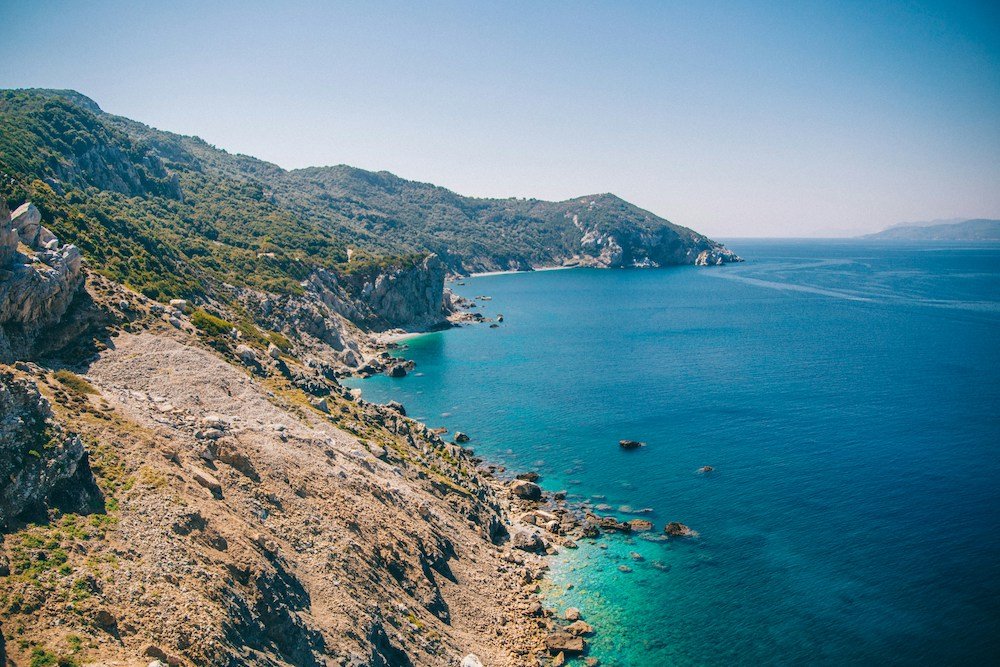
Skiathos, a picturesque island nestled in the Aegean Sea, is renowned for its stunning beaches, lush landscapes, and vibrant atmosphere.
Situated in the Sporades archipelago, Skiathos captivates visitors with its crystal-clear waters, golden sands, and charming villages, making it a beloved destination for sunseekers and nature enthusiasts alike.
Introducing itself as a paradise for beach lovers, Skiathos boasts a wealth of unique features and attractions.
Its idyllic beaches, such as Koukounaries, Banana Beach, and Lalaria Beach, are renowned for their soft sands and turquoise waters, offering the perfect setting for swimming, sunbathing, and water sports.
Moreover, Skiathos’ lush pine forests, scenic hiking trails, and panoramic viewpoints offer breathtaking vistas of the Aegean Sea and the surrounding islands.
The best time to visit Skiathos is during the summer months, from June to September, when the weather is warm, and the island is in full swing with festivals, events, and outdoor activities.
During these months, visitors can enjoy long sunny days, lively nightlife, and a vibrant atmosphere that epitomizes the Greek island lifestyle.
For travelers planning a visit to Skiathos, it is recommended to explore the island’s charming villages and cultural attractions.
From strolling through the narrow streets of Skiathos Town to visiting historic monasteries and churches scattered across the island, Skiathos offers a glimpse into its rich history and heritage.
Moreover, indulging in Skiathos’ renowned cuisine, which features fresh seafood, locally sourced produce, and traditional Greek dishes, is a must for food enthusiasts.
Whether lounging on its pristine beaches, exploring its scenic landscapes, or immersing oneself in its vibrant culture, Skiathos captivates visitors with its timeless beauty, warm hospitality, and authentic Greek charm, making it a must-visit destination for travelers seeking an unforgettable experience in the Aegean.
Conclusion
Throughout this journey, we’ve explored twelve of the most captivating European islands, each offering its own unique blend of natural beauty, culture, and history.
From the azure waters of Santorini to the rugged cliffs of Skye, these islands have enchanted travelers for generations, beckoning them to discover their hidden treasures and unforgettable experiences.
As you’ve learned about these remarkable destinations, I encourage you to embark on your own adventure and explore the beauty of Europe’s islands firsthand.
Whether you seek sun-drenched beaches, historic landmarks, or vibrant cultural scenes, there’s something for everyone to discover on these enchanting islands.
So pack your bags, set sail, and immerse yourself in the wonders that await you.
European islands are not just destinations; they are experiences that linger in the memory long after the journey has ended.
From the rugged landscapes of Scotland to the sun-soaked shores of Greece, each island tells its own story, weaving together a tapestry of history, culture, and natural splendor.
As you explore these diverse landscapes and vibrant communities, may you be inspired by the beauty of our world and the endless possibilities that await you on your next island adventure.

FAQ’s About the Best European Islands:
Which Island is the Most Beautiful in Europe?
Defining the “most beautiful” island in Europe is subjective, as beauty is in the eye of the beholder.
However, Santorini in Greece often ranks high on lists of picturesque destinations due to its iconic white-washed buildings, stunning sunsets, and dramatic cliffs overlooking the Aegean Sea.
What is the Most Visited Island in Europe?
The most visited island in Europe is Mallorca, which is part of the Balearic Islands in Spain.
Mallorca attracts millions of tourists annually with its beautiful beaches, vibrant nightlife, and rich cultural heritage.
Which Island in Europe Has the Best Beaches?
Many islands in Europe boast beautiful beaches, but one that stands out is Mykonos in Greece.
Mykonos is renowned for its crystal-clear waters, sandy beaches, and vibrant beach bars, making it a favorite destination for beach lovers.
Is Crete Better than Malta?
Both Crete and Malta offer unique charms and attractions. Crete, the largest Greek island, is known for its diverse landscapes, ancient ruins, and rich history.
Malta, on the other hand, is renowned for its historic sites, stunning architecture, and vibrant culture.
The choice between Crete and Malta ultimately depends on individual preferences and interests.
What is Europe’s Most Visited Tourist Destination?
Europe’s most visited tourist destination is Paris, France. Known as the “City of Light,” Paris attracts millions of visitors each year with its iconic landmarks, world-class museums, and romantic ambiance.
What are the 4 Island Countries in Europe?
The four island countries in Europe are:
- United Kingdom (comprising the islands of Great Britain and Ireland)
- Ireland
- Iceland
- Malta
How Many Islands are There in Europe?
Europe is home to thousands of islands, ranging from large landmasses like Great Britain to tiny uninhabited islets scattered across the seas.
The exact number of islands in Europe is difficult to determine due to varying definitions and classifications.
What are the 2 Largest Islands in Europe?
The two largest islands in Europe are:
- Great Britain: The largest island in Europe and the ninth largest in the world, it comprises the countries of England, Scotland, and Wales.
- Ireland: The second-largest island in Europe, it is divided between the Republic of Ireland and Northern Ireland (part of the United Kingdom).
What are the 4 Major European Islands in the North Atlantic?
The four major European islands in the North Atlantic are:
- Iceland
- Ireland
- Great Britain
- The Faroe Islands
